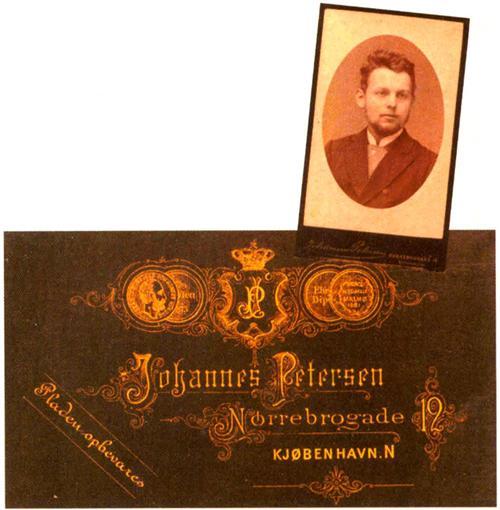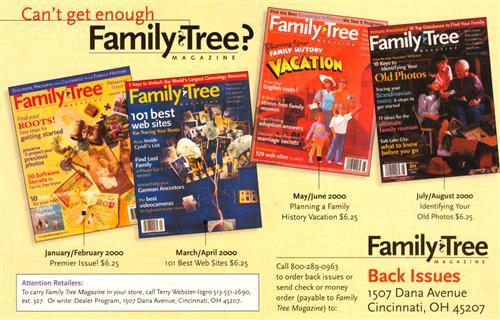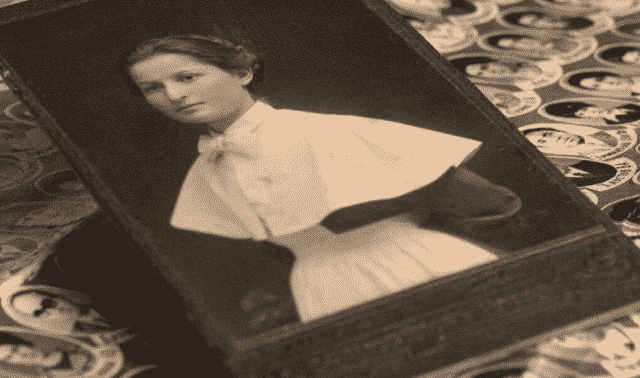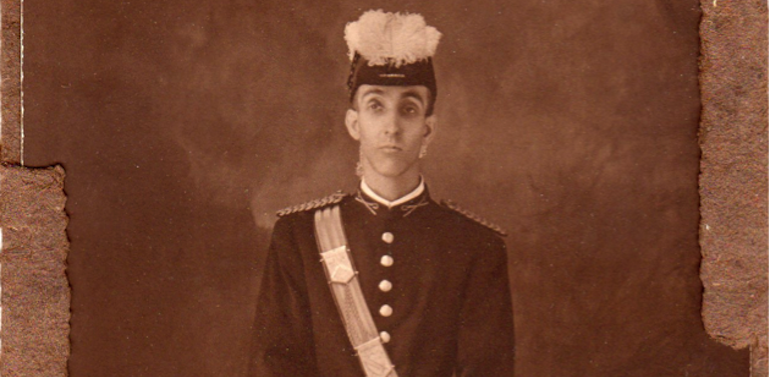Sign up for the Family Tree Newsletter Plus, you’ll receive our 10 Essential Genealogy Research Forms PDF as a special thank you!
Get Your Free Genealogy Forms
"*" indicates required fields
Q. I have a number of pictures of my family taken by foreign photographers. How can I date them?
A. Dating a photograph by establishing when the photographer was in business is an essential part of photo identification. This research can assign a time frame for the image and ultimately help you identify the individuals in the picture. You can find the photographer’s imprint in a number of places, depending on the type of image. It’s commonly found on the bottom edge of the photograph or on the back. Some photographers embossed the lower corner of an image with their name. Imprints usually include the photographer’s surname and city where he or she worked.
Foreign photographs add another wrinkle, of course. When researching foreign photographers you may need a language dictionary to help you decipher any printing or writing on the image. The town name will also need translating: For instance, Copenhagen can appear as KjØbenhavn in the imprint. Finding the locality in an atlas or gazetteer can uncover the country in which the photographer worked. Just keep in mind that many place names changed or disappeared during political upheavals.
You can attempt to research the photographer by using as much of the name as appeared on the image. Two excellent resources can help: The International Museum of Photography at George Eastman House has an online database of photographers <www.eastman.0rg/4_educ/gehdata.html>. Peter Palmquist’s Photographers: A Sourcebook for Historical Research (Carl Mautz Publishing, out of print) contains a bibliography of directories of photographers from all over the world.
You can also use city directories and census records if they are available for the location you’re researching. The WorldGenWeb project <www.worldgenweb.org> can help you become familiar with the availability of those resources for a particular country. The Church of Jesus Christ of Latter-day Saints publishes a series of guides to conducting country-specific research. These guides are available in print for a nominal cost or on the Web <www.familysearch.org>.
If your initial attempts to locate the photographer fail, try using the online genealogy search engines offered by Family Tree Magazine‘s site <www.familytreemagazine.com/search>, Genealogy.com <www.genealogy.com> and Ancestry.com <Ancestry.com >. For example, a search for photographer Johannes Peterson of Copenhagen yielded leads using several of the above searching tools.
Researching the photographer is only one of the ways to date a photograph. Costume clues, genealogical research, and photographic methods can also help. For more photo-identification techniques see my article “Picture Puzzles” in the August 2000 Family Tree Magazine.
–
MAUREEN A. TAYLOR is the author of Uncovering Your Ancestry through Family Photographs (Betterway Books, $18.99). She writes a column on Family Tree Magazine‘s Web site, where she helps users identify their old family photos <www.amilytreemagazine.com/photos/photohelp.htm>.
Jewish Italians
Q. How can I research surnames of Jewish families from Italy?
A. There are many Italian Jews, and Jewish culture was very prominent in Italy at times in its history. Several books can help you research surnames of Italian Jews. First, the book on Italian surnames is Joseph G. Fucilla’s Our Italian Surnames (Genealogical Publishing Co., $28.50); the current edition is a 1998 reprint of the 1949 edition. As for Jewish surnames, see A Dictionary of Jewish Surnames from the Russian Empire (Avotaynu, $75) and A Dictionary of Jewish Surnames from the Kingdom of Poland (Avotaynu, $69.50), both by Alexander Beider.
– Sharon DeBartolo Carmack
SHARON DEBARTOLO CARMACK reviews 10 more genealogy books in her Bookshelf column (page 66).
reader tip: Cousins by the Dozens
The big search engines such as AltaVista <www.altavista.com> can help locate distant cousins who are researching the same lines as you. My ancestor, Caroline McGlathery, married William McClanahan in 1841. An “advanced search” on AltaVista yielded cousins by the dozens. Type in “(family history OR genealogy) AND mcclanahan AND mcglathery” and you’ll get a list of every Web page containing both words that AltaVista has found. Try this every few months and you’ll find more and more genealogy pages on your lines. For an advanced search, go to the screen at <www.altavista.com/cgi-bin/query?pg=aq&what=web/>.
TOM ALCIERE
Nashua, NH
Editor’s note: You can search AltaVista and eight other top search sites with a single click from Family Tree Magazine‘s SuperSearch <www.familytreemagazine.com/search/general. asp>. Be sure to select “Boolean” under “Search Type” to do the kind of search described here, and select “All” wider “Show Results” to see all your hits.
Send questions to Now What?, Family Tree Magazine, 1507 Dana Ave., Cincinnati, OH 45207, or e-mail nowwhat@familytreemagazine.com. Sorry, we can’t respond personally or answer all questions.
ADVERTISEMENT





